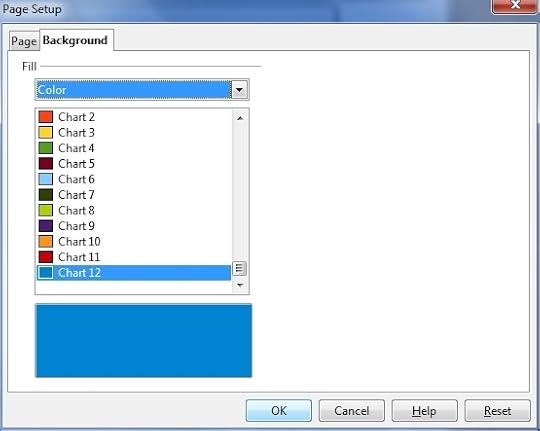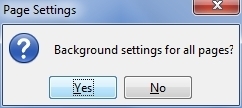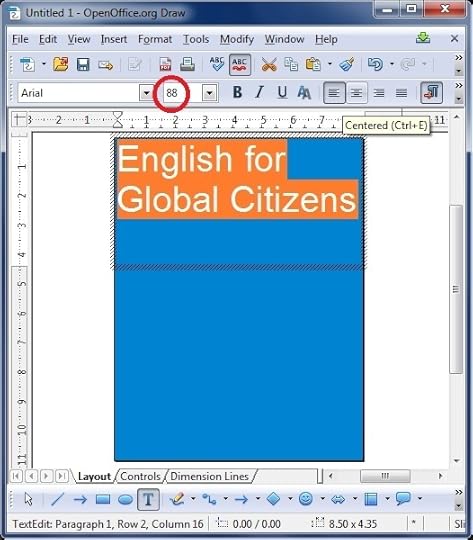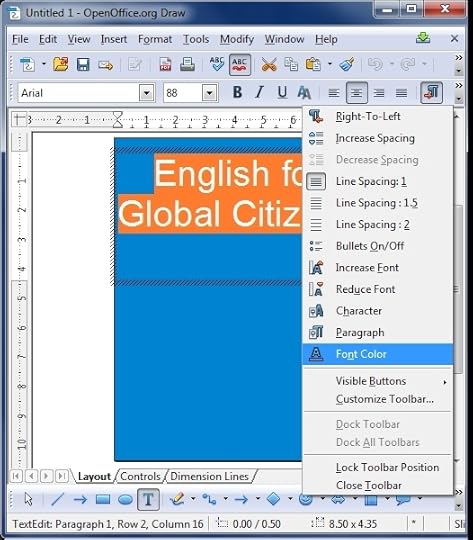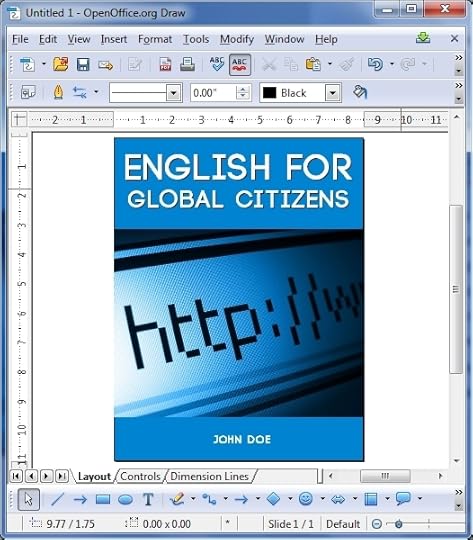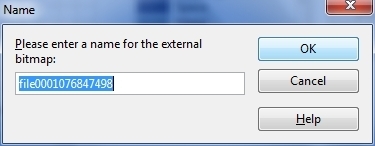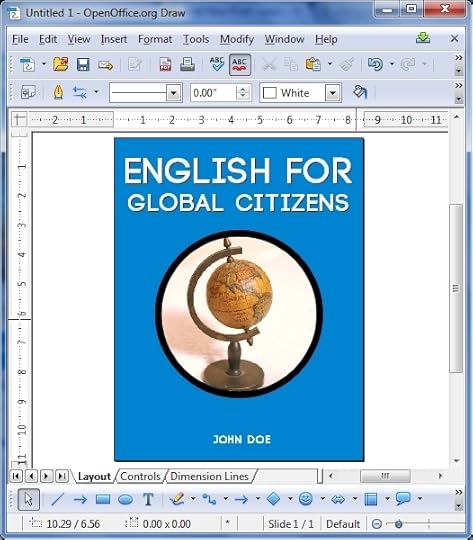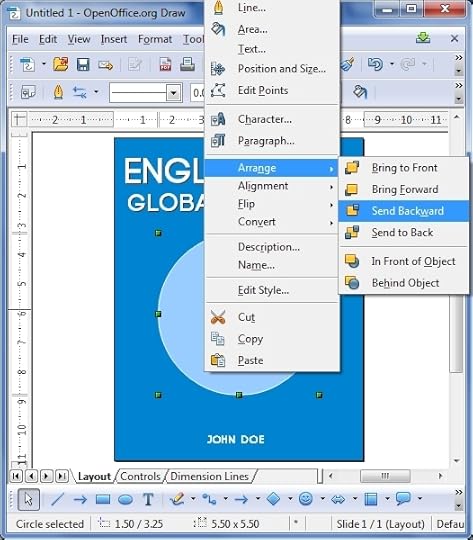André Klein's Blog, page 24
December 20, 2012
“Creating your own Job is sexy – and the Internet makes it possible”
Everyone loves the Internet. It’s a place of endless music, streaming movies, research, shopping opportunities and cat pictures. It enables us to talk with people on the other side of the planet at the tap of a finger. In short, it’s the ultimate content consumption and communication device. But how many of us look at it as an employment sector?
Neelie Kroes, Vice-President of the European Commission responsible for the Digital Agenda said at a press conference on new digital priorities for 2013-2014:
When it comes to jobs, I want you to know that the internet creates jobs.
In the year 2012 many young people are struggling to find a job, youth unemployment rates in Greece and Spain are at 50%. It’s not easy to find jobs anywhere, not just in those countries most hit by the recession. Stories of highly qualified individuals with no job abound. The stacking up of diplomas continues but they don’t convert into stable positions. Maybe the problem is not that there are no jobs but that we are simply looking for them in the wrong place?
As more and more manual and repetitive work is automated, computerized and outsourced many jobs vanished. And we keep banging on the same doors, expecting different results.
According to Kroes we might benefit from a bit more entrepreneurial spirit and instead of trying to sell ourselves to employers and send out hundreds if CVs we could just create our own jobs.
I want Europeans to see that creating your own job is sexy – and the internet makes it possible. We need more people brave enough to take that opportunity.
Why is it that so few people do it? Is it so difficult to become an “Internet worker”? Is it only for programmers and venture capitalists? Far from it. The missing component is neither the lack of IT-knowledge (every pre-teen) handles digital systems effortlessly nowadays, nor is it the money, for it doesn’t have to cost much to create something on the Internet. The real problem seems to be something else entirely: the aversion to risk taking.
As a German I can only confirm that our mentality favors the time-tested and thoroughly thought through over the hastily improvised. “Just do it” might be a popular label on shoes and T-shirts but in reality we’d rather “plan a long time and prepare testing scenarios and collect research”.
We Europeans love stability. We’re the old continent. We have seen it all, we’re not easily moved by anything. This might give us a levelheadedness but there’s also the danger of falling asleep.
No Risk, No Fun?
Maybe we should reevaluate the dynamics of risk. In 2005, researchers from the Institute for the Study of Labor (IZA), the University of Bonn and the German Institute for Economic Research (DIW) in Berlin conducted a survey in which they evaluated more than 20,000 interviews and found that people who enjoy taking risks seem to be more content with their lives.
But are they more content because they are willing to take more risks or do they take more risks because they feel more content?
Tom Ashbrook, founder of HomePortfolio, Inc. writes:
To seriously consider taking the entrepreneurial leap already sets a person apart from the vast majority of men and women, who will never come close to actually leaving the world of wages. But even for the brave-of-heart, the reality of risk that comes with that leap — when the last paycheck is left behind and life is reduced to a single do-or-die mission — hits like ice water.
How can one prepare for for this leap? In my experience there is no way one can be prepared fully, one can only experience it and learn from it. Nevertheless, Ashbrook has some solid advice that everyone who considers making the leap should think about.
“Don’t take the entrepreneurial leap simply for money. Of course, you want to be successful. But follow a real passion in your venture, whatever it may be. That passion will carry you through the days when risks and obstacles seem insurmountable. When the chips are down, your passion can be a great stabilizer, a powerful antidote to the inevitable emotional challenges of risk.”
It’s not just that this passion will carry you through the bleak days (of which there are many, just like the sunny ones), but it’s this spirit which will help you create products or services that have a genuinely positive impact on people’s life. Being an entrepreneur is not just another job where there’s always someone else higher up the ladder who’s calling the shots. You might make a lot of money very quickly, you might have to wait years before you can leave your one room apartment. But ultimately, this is not just a quest for financial security, it’s a matter of personal satisfaction and contributing to the world in ever new creative ways.
-
Img: Russian workers posters

 About the author:
André Klein was born in Germany, has grown up and lived in many different places including Thailand, Sweden and Israel. He has produced two music albums, performed and organized literary readings, curated an experimental television program and is the author of various short stories and non-fiction works.
About the author:
André Klein was born in Germany, has grown up and lived in many different places including Thailand, Sweden and Israel. He has produced two music albums, performed and organized literary readings, curated an experimental television program and is the author of various short stories and non-fiction works.
December 12, 2012
E-readers aren’t dead, Tablets are just snazzier

A report has been making the rounds lately which shows the “shocking” decline of e-reader sales and has been quickly interpreted as the “Death of E-reading” and the “Conquest of Tablets”. Instead of debating on numbers and statistics, let me add some anecdotal evidence from my own life.
Pure Unmitigated Bliss of Reading
Despite being very skeptical in the beginning, when I got my first ereader I was reading on it day and night. I read more, faster and more conveniently than ever before. To someone who has been reading long texts on glowing screens for more than a decade, the non-illuminating paper-like nature of the e-ink screen was a welcome change.
After a while I even started listening to podcasts on it, checking my emails, receiving feed subscriptions and reading my customized morning newspaper on a daily basis. Although I admit that using the “experimental” browser feature was a nightmare, the reading itself was pure unmitigated bliss.
The New Kid in TownAll that was to change abruptly when the first tablet computer entered my home. Here was a device that could do almost everything my laptop could do, only more conveniently, faster and more enjoyably. I started reading my custom newspaper at the flick of a finger, answered emails at lightning speed, streamed full length movies, downloaded music, played games, edited photos, created sketches, songs and blogposts, etc.
As the weeks went by downloading and trying out new apps, I began to miss something. I wasn’t sure exactly what, but the tablet experience was so … exciting, and as I went from working on my laptop to afternoon resting time with the tablet, sometimes I felt stressed out all by this information and interaction which was literally at my fingertips.
And then it suddenly hit me that it had been many days that I picked up and read a good novel. Mobile gaming, social media and video streaming are all great but there’s nothing like delving into a good book and losing oneself in a story or compellingly crafted exposé.
Confused? Don’t worry, it means we’re still moving…If this personal account proves anything (apart from my own wayward media consumption habits) then it’s that e-readers and tablets are completely different devices for completely different purposes (nowadays, I tend to work on my laptop, use the tablet for email and social media during the day and unwind in the evening reading on my e-reader) they aren’t necessarily in competition with each other.
There’s still a huge confusion out there about what a digital book is supposed to be: is it like a website? Is it an app with integrated video and audio? Is it like an interactive adventure game? Or is it simply about displaying words in the most convenient and flexible way?
The confusion is only natural, though and points to the fact that we’re in the middle of a great shift regarding the role of producing and processing the written word.
Once the dust has settled we’ll see which devices are fads and which are here to stay. Remember laserdisc players, the Sony Walkman and discman? These are all devices which have disappeared because of more convenient means of consuming the same content.
Whether the e-reader is a fad no hastily interpreted sales numbers can prove, only time will tell…

 About the author:
André Klein was born in Germany, has grown up and lived in many different places including Thailand, Sweden and Israel. He has produced two music albums, performed and organized literary readings, curated an experimental television program and is the author of various short stories and non-fiction works.
About the author:
André Klein was born in Germany, has grown up and lived in many different places including Thailand, Sweden and Israel. He has produced two music albums, performed and organized literary readings, curated an experimental television program and is the author of various short stories and non-fiction works.
December 5, 2012
The Easy Way To Sell Digital Downloads From Your Website

Have you ever considered selling digital products such as books, tutorials, videos, etc. from your own website? After all, blogging is hard work. Why just rely on advertising fees to support your writing when you can sell your own digital downloads?
When I first tried this two years ago, I had a PDF version a paperback and I wanted people to be able to click a link, pay with Paypal or credit card, then get access to the download.
The concept was so simple but apparently there was no simple technical solution. As I’ve described here, in order to sell digital downloads you either need to pay third-party services monthly fees or handle all sales through a third-party website such as tinypay.
Since I didn’t want to send people away from my website and lose control over design and function, I decided to bite the bullet and pay a monthly subscription to e-junkie.
For two years I’ve been using this system to successfully sell PDFs, ZIPs and other downloads, but there were all kinds of limitations. Each subscription plan only covered a certain amount of products that I could sell and file sizes were limited. In addition to that, even though e-junkie lets you customize “add to cart” buttons and integrate them seamlessly into your website, all users still got sent through the e-junkie server (which appeared in the browser address bar) and – with all due respect – that name…maybe it’s just me but it always made me think of grease-dripping fast-food or heroin-addicts, not the kind of positive vibes that contribute to a good shopping experience.
Enter “Easy Digital Downloads”When I stumbled over a new wordpress plugin called Easy Digital Downloads at first I couldn’t believe it. Here was a free plugin that promised to do everything e-junkie did, but promised to let me sell downloads through my own server, completely free.
After playing around with it for a week I decided to use it as a backbone for our Hanukkah Ebook Bundle and it worked so well that eventually I switched over our bookshop to Easy Digital Downloads as well.
Here are a few of the things that I love about it:
it focuses only on digital downloads and is not bloated like other so called “shopping solution”its developers are dedicated to answer all questions and continuously improve itit allows you to create “add to cart” buttons to sell products quickly by using its custom shortcodessince it’s a WordPress plugin it’s very easy to “hack” minor aspects of it by fiddling with the source codethere are tons of premium extensions available which help to sell your downloads in a myriad different waysWant to try it out? Click here to see the plugin in action on a standard WordPress installation or watch a short video which explains how it works:
-

 Some rights reserved by Sarabbit
Some rights reserved by Sarabbit

 About the author:
André Klein was born in Germany, has grown up and lived in many different places including Thailand, Sweden and Israel. He has produced two music albums, performed and organized literary readings, curated an experimental television program and is the author of various short stories and non-fiction works.
About the author:
André Klein was born in Germany, has grown up and lived in many different places including Thailand, Sweden and Israel. He has produced two music albums, performed and organized literary readings, curated an experimental television program and is the author of various short stories and non-fiction works.
November 28, 2012
When You Buy An Ebook, It Should Be Yours, Period.
Long gone are the days of rummaging through second hand book and record shops for that oblique cultural item once referred to by a friend of a friend in a late-night bar conversation. Nowadays, you just wake up, sit down with your hangover and buy the record on iTunes or the book on Amazon.
And while pajama-shopping is just too convenient and becoming more and more popular because it hits the weak spot of human laziness and immediate gratification, there are serious ramifications to this brand new world.
You Don’t Own Your Music Or BooksImagine you visit a book shop around the corner, buy a book, carry it home and after a few weeks it refuses to open or mysteriously disappears right from your shelves. What sounds like a surreal fantasy is a sad reality in the world of digital book and music purchases.

Whether it’s the stories of Amazon wiping users’ Kindles or of Bruce Willis suing Apple to transfer his iTunes music library to his daughter posthumously (the story has been discredited by Willis’ wife, but the fact that it became widely spread speaks for itself), there’s an underlying concern about the fact that purchasing music on iTunes or books on Amazon doesn’t mean that you actually own them, instead you merely purchase a license for temporary access which can be revoked at any time.
I’ve read an article once that said this is actually a good thing because it teaches us not to cling to material possessions, but all piousness aside, if I bought something I want to have at least some control over it, not even for my own sake but just for being able to freely share it with my friends. So why can’t I give my iTunes music library or Kindle books to a friend just like I used to give them a record or a beaten paperback?
DRM: Artificial LimitationsDRM is the reason why you can’t share your Kindle books with your friends. DRM stands for Digital Rights Management which just a fancy term for copy-protection. Many Kindle books come with DRM (the publisher decides this, not Amazon) which locks a purchased book to a specific customer account and unique device. By nature, ebooks are digital files, just like an Office document and therefore can be copied infinitely without loss of quality. Some publishers don’t like this, they are afraid that they will lose sales from people who just copy instead of buying, so they DRM-lock their books (paradoxically it’s often these locked books which get most pirated). Not only does DRM prevent you from making backup copies of your purchases but if there’s ever a problem with your user account, you might lose all your books.
Pricing and MonopoliesAnother reason why people are getting wary of buying through iTunes or Amazon is because with each purchase they are contributing to huge companies which make it increasingly difficult for any competitors to survive. In a way, each time you buy an ebook from Amazon or a song from iTunes you are bringing the world one step closer to a state where there are just a handful of monopolistic companies. If you want to keep on supporting authors and musicians but don’t want to feed The Man, what can you do?
Another World Is PossibleThe irony of all of this is that it’s neither impossible or terribly difficult to implement an entirely different model. The problem is not about technological solutions but changing consumer habits. It’s so easy to buy books and music the corporate way and many people aren’t even aware of the limitations, until something goes wrong.
We recently launched an experiment with which we want to challenge these habits. Since Hanukkah is coming up soon we are giving away a whole bundle of Hebrew learning ebooks on a “pay what you want” basis, without DRM (no copy and backup restrictions) and instead of letting Amazon take a bite, we’ll donate 10% of each sale to a local charity for disadvantaged children.
This is not about making huge profits (although we certainly don’t mind if we do) but simply about showing that “another world is possible and we pledge to make it real”.
If you like this idea please take a few seconds to share this blog post or our Hebrew bundle with your friends. Thank you.
-
img: concocted out of clker items

 About the author:
André Klein was born in Germany, has grown up and lived in many different places including Thailand, Sweden and Israel. He has produced two music albums, performed and organized literary readings, curated an experimental television program and is the author of various short stories and non-fiction works.
About the author:
André Klein was born in Germany, has grown up and lived in many different places including Thailand, Sweden and Israel. He has produced two music albums, performed and organized literary readings, curated an experimental television program and is the author of various short stories and non-fiction works.
November 25, 2012
Death By Gaming: A New Murder Mystery For German Learners

About a year ago I launched a little experiment of writing a detective story for German learners, intent on combining both fun and methodical learning. Little did I know that it would become so popular. It has been on the Amazon bestseller charts almost since the beginning and I received a lot of positive feedback and calls for more, so I followed it up with a second episode this summer and now I’m proud to present the third episode, now available on Amazon (iBooks, Barnes&Noble, Kobo coming soon).
For those of you who haven’t read any of the episodes yet, the main protagonists are Kommissar Baumgartner and his colleague Kommissarin Katharina Momsen. He is a grumpy old-fashioned flatfoot with an infallible instinct for catching killers, she’s a sassy sleuth and a cold sober markswoman. In the two previous episodes (“Mord am Morgen“, “Die Dritte Hand“) they had to solve crimes that ranged from small-town conspiracies to international Mafia killings, yet nothing prepared them for their third case.
In a seedy internet café the dead body of a teenager is found. What caused his death? Did he die from exhaustion or was it murder? Help Kommissar Baumgartner and his colleague Katharina Momsen unravel this mystery and improve your vocabulary along the way!
This book contains:
a page-turning story crammed with humor and suspensespecial emphasis on idioms and natural Germanvocabulary sections with difficult and important words translated to Englishready for on-demand translationexercises for comprehension traininghand-drawn illustrations by the authorTo get the ball rolling, the story will be available for purchase at only $0.99 per copy during the first few days. As usual, I’d also like to ask anyone who downloads it to leave a short review on Amazon to help me improve this series.
Interested? Click here or on your corresponding country code: US | UK | DE | FR | ES | IT
Have a nice day and happy crime solving!
-
img:
 Some rights reserved by chez_sugi
Some rights reserved by chez_sugi

 About the author:
André Klein was born in Germany, has grown up and lived in many different places including Thailand, Sweden and Israel. He has produced two music albums, performed and organized literary readings, curated an experimental television program and is the author of various short stories and non-fiction works.
About the author:
André Klein was born in Germany, has grown up and lived in many different places including Thailand, Sweden and Israel. He has produced two music albums, performed and organized literary readings, curated an experimental television program and is the author of various short stories and non-fiction works.
November 20, 2012
Online Learning as a Coping Strategy In Times Of Conflict
We usually tend to think of learning as a means to an end, i.e. learning medicine to become a doctor, etc. But in some areas of the world, learning has a very different function in addition to that.
One of these areas is South Israel whose citizens have been under rocket attacks by Islamic fundamentalists for twelve years. Only recently, due to Israel’s military response has this issue returned to the front pages of newspapers and websites, but the problem has always been there.

Students in Sderot waiting out a rocket attack (source)
These people and their children live in constant dread of the next air raid siren going off, interrupting their work, daily schedule and school, only to run to a bomb shelter. In some cities people have 45 seconds, in others they have less than 20 seconds to secure themselves before the rocket impacts.
Even when there is a rare week without an attack, the possibility of yet another run to the shelter lingers constantly in the back of the mind. How do people deal with this situation and go on about their daily business without succumbing to pure hysteria? Ynet published an article recently that describes how children and parents relate to this constant threat.
“When I do my homework I do not forget the alarm, but it’s more comforting me”This week, like many weeks before, schools in southern cities such as Ashkelon, Ashdod and Beersheba had to be closed due to terrorist attacks on public schools. Shachar, a fifth grader in Be’er Tuvia says what she misses most are her friends, because most children are afraid to leave the house.
Sitting at home, close to bomb shelters, parents try to occupy their children with video games, board games and television, but these activities are limited, says Shachar’s mother. Teachers stay in contact with students and send them worksheets and tasks via email which the students can print and solve at home.
Omar, a fourth-grader says that these activities help him cope with the terrifying situation during the rocket barrages. “When I do my homework I don’t forget the alarm, but it’s comforting me,” he says. “But when I communicate to my friends I miss them and want to go back to school.”

a school in Ashkelon that was struck by a missile from Gazan radicals (source)
“Return to fun, pencil and eraser”For older students who are preparing for exams, closed schools mean a loss of precious time. Aviad Shamriz, a grade school senior is currently preparing for a big history exam. “There is a lot of material and every day we are not going to school is a big loss for us,” he says, “I read the study material, answer the questions and practice.”
Teachers also try to keep in touch with students in these tense days. A teacher at a school in Ashdod corresponds via the Internet with her class every day and even talks to them on the phone every other day. “One student wrote to me that she makes costumes from her parent’s closet and every day dresses up as something else. Another student wrote she makes lemon juice. The answer vary, but there’s a very important value that they return to fun, pencil and eraser. “
Real-Time Live Lessons In Emergency SituationsIn the meantime, the Beersheba municipal Ministry of Education yesterday morning launched the first system of its kind in Israeli schools which enables the synchronized transfer of live online lessons. Students will now be able to sit at home and participate in real-time lessons, during which both teacher and classmates can see and hear each other and engage in discussion. Besides the live video and audio, teachers employ whiteboards that allow them to display images and write things down which each one of the students can see. In the light of success of this first pilot project, the municipality has decided to implement the project throughout the city.
In the mornings virtual meetings are being held between teachers and school administrators to learn the system. It is estimated that by the beginning of next week, students all over Beersheba, a city with a population of 194,300, will be able to participate in real-time lessons from home, if there’s a need. The Deputy Mayor and Commissioner of Education, said: “The city of Beersheba is glad about the opportunity to expand educational opportunities, and allow personal contact and also safe learning routines during emergency situations.”
-

 About the author:
André Klein was born in Germany, has grown up and lived in many different places including Thailand, Sweden and Israel. He has produced two music albums, performed and organized literary readings, curated an experimental television program and is the author of various short stories and non-fiction works.
About the author:
André Klein was born in Germany, has grown up and lived in many different places including Thailand, Sweden and Israel. He has produced two music albums, performed and organized literary readings, curated an experimental television program and is the author of various short stories and non-fiction works.
November 13, 2012
A Brief Guide To Reddit For Publishers
Reddit is beginning to shape and influence the world in ways that are only now becoming apparent, bringing a higher order of organization to content online, and allowing for an evolution in the potential of collaboration. – Blue Glass Blogger
 Reddit is one of the biggest social media sites most people don’t use. Not only is it a great source for topic-specific information, discussion and learning, it’s also a huge driver of traffic, boasting more than one billion page-views each month.
Reddit is one of the biggest social media sites most people don’t use. Not only is it a great source for topic-specific information, discussion and learning, it’s also a huge driver of traffic, boasting more than one billion page-views each month.
In fact, the site is infamous for sometimes sending so much traffic in such a short time that smaller web servers will simply buckle under the onslaught of visitors!
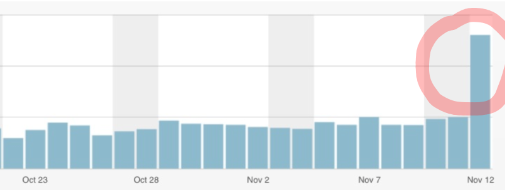
the reddit effect
The following article summarizes some of my own experiences with the site, how it became one of my primary sources for very specific news (besides Twitter) and how one might approach the site while trying to promote one’s own work, which is not frowned upon on Reddit but even encouraged if done in the right manner.
IMPORTANT: in order to be “successful” on Reddit you’ll have to participate. Just dumping links and expecting returns won’t work here, just as it won’t work anywhere else.
How It WorksThe idea of the site is very simple. Anyone can submit stories to the site’s various forums, known as sub-reddits, and then “redditors” (the site’s users) can vote these items up or down. Reddit calls itself “the front page of the Internet”, because that’s what you see when you first open the site: the front page containing all the most up-voted items of any given day or hour. And once you start subscribing to the right topics the front-page will show you the most popular items in your chosen fields of interest.
How To Get StartedFirst of all, create an account and play around with the site. By default each new user is subscribed to default “popular” sub-reddits such as “r/funny” or “r/pics” etc. Many of these standard sub-reddits are a bit juvenile and cater to short attention spans à la cat videos. Nothing against cat videos, mind you, but many people take a look at Reddit, they see dirty jokes and “memes” and think that’s all there is to the site.
Therefore it can be helpful to unsubscribe from these default sub-reddits in the beginning and instead start subscribing to sub-reddits relevant to your interest or niche. Finding the right sub-reddits for your topic often isn’t easy, so here are a few guidelines.
How To Find Good Sub-RedditsEach sub-reddit is referred to as “r/name-of-subreddit” which is also the URL, so by going to “reddit.com/r/technology” you’ll land on the main page of this sub-reddit. On the right part you’ll see the sidebar. This sidebar is very important because you’ll find there the amount of subscribers for this topic and important guidelines what to post, how to post, what not to post.
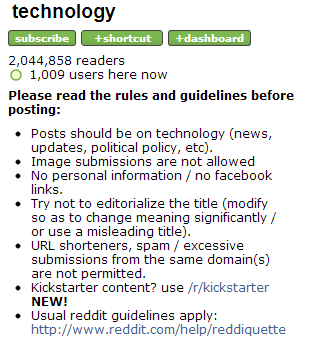
the sidebar of r/technology
Furthermore, by looking at the entries submitted to a particular sub-reddit, it will become clear very quickly whether you want to participate or not.
IMPORTANT: Before you submit anything make sure to accumulate at least a minimum of karma points, because otherwise you’ll appear as a spammer and your post will be quickly down voted or even deleted.
Karma what?
Each redditor has a certain karma value which consists of both link karma and comment karma. You get link karma whenever someone up votes your link. You get comment karma whenever someone up votes your comment.
Which Content To SubmitObvious marketing ploys, generic articles for link baiting purposes or otherwise bland content will get almost certainly rejected. In my experience the content that works on Reddit is often a) very unique (not already shared on Facebook by your aunts and uncles), b) without obvious commercial interest, c) funny, d) controversial or e) all of the above
There’s no use in submitting each one of your blogposts to Reddit. Only pick the best to submit! And even if you have something that you think might pique the interests of hundreds of thousands of redditors, there are a few things to keep in my mind while submitting.
Tips For Submitting Your Own ContentAs I’ve already pointed out, the most important part is to participate at first by commenting and voting on other content. Once you get the hang of it and have stashed up on some karma, you can try to submit a link.
In my experience the “success” of a reddit submission depends on (at least) 3 factors (besides its content):
The sub-reddit you are submitting toThe title you give your submissionThe timing1. Choice Of Sub-Reddit
To give a very simple example, if you post a funny cat picture to r/worldnews it will get infinitely down voted because it’s simply irrelevant. On top of that, each sub-reddit hat its own attitude or “mood” which will lean towards certain styles and contents and reject others.
The only way to find out about these tendencies is to subscribe to and participate on a subreddit for a while. This is why just submitting something randomly will always fail.
2. Titling Your Submission
The usual “link-baiting” language of headlines and ads won’t work here. The average redditor will smell shameless self-promotion a mile away, which is a good thing, so make sure to scrape those extra creative juices together and submit your item with a headline that sums up the content or piques interest in a manner which is a) casual, b) funny, c) personal or otherwise human. But again, keep in mind to check the sub-reddit’s guidelines in the sidebar before posting.
3. Timing
Before you submit to a sub-reddit, go to its main-page and look at the activity (“posted X hours ago”). On many of the more popular sub-reddits, Americans have a big majority, so you might want to wait with your submission until either the East or West coast or both are awake. Otherwise your item might get buried. Timing is not as severe here on Twitter, but it does make a difference.
A Selection Of Powerful Sub-RedditsWhat sub-reddits you’ll subscribe to depends on your interests of course, but here are some examples for educational topics and publishing, since these are also the main foci of this blog:
r/kindle/ 12,119 readers
r/KindleFreebies/ 2,924 readers
r/ebooks/ 3,313 readers
r/selfpublish/ 1,828 readers
r/linguistics/ 30,490 readers
r/languagelearning/ 14,928 readers
r/learnanewlanguage/ 2,456 readers
r/LANL_German/ 4,588 readers
r/education 20,819 readers
Tools For Making Using Reddit Easier
The Reddit user-interface isn’t that easy to get used to, but there are some tools and extensions that help improve it:
Reddit Enhancement Suite Browser Extension - browser extension for Chrome, Firefox, Opera, Safari
AlienBlue – terrific Reddit client for IOS (not free, but absolutely worth the money)
-
Do you use reddit? How do you like it? What do you like about it? What not?

 About the author:
André Klein was born in Germany, has grown up and lived in many different places including Thailand, Sweden and Israel. He has produced two music albums, performed and organized literary readings, curated an experimental television program and is the author of various short stories and non-fiction works.
About the author:
André Klein was born in Germany, has grown up and lived in many different places including Thailand, Sweden and Israel. He has produced two music albums, performed and organized literary readings, curated an experimental television program and is the author of various short stories and non-fiction works.
November 12, 2012
Watch Hulu, Netflix From Anywhere in The World
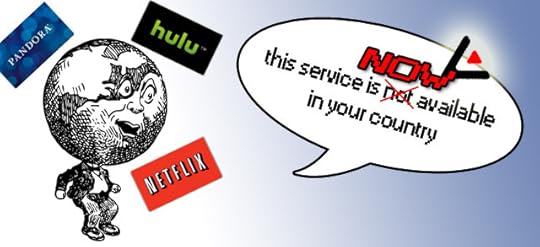
If you’re like me then you’ve probably been bothered before by the fact that the contents of Hulu and Netflix (and others) cannot be accessed outside of the United States. So far the only solution was to pay for a VPN service that pretends you’re sitting in North America, but these services are often costly and require running third-party software in the background.
Admittedly, I was more than just a bit skeptical when I stumbled over mediahint, a new browser extension for Chrome and Firefox that promises to circumvent the geo-blockades and let anyone in the world enjoy these services for free.
So I decided to give it a try and installed the extension (no sign up required). After a few seconds I was browsing Hulu and clicked on a TV series, only to expect the “not available in your country” message, but against all expectations it worked and the stream started playing.
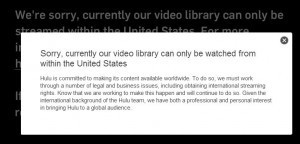
BEFORE: without the extension installed
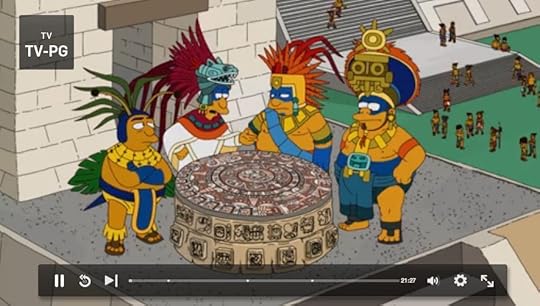
AFTER: extension installed
Next up I tested Netflix. The site also loaded without problems. Instead of the “only for US” I was seeing the sign up page for new accounts.
How about Pandora? Tested it: works! I am listening to it while writing this blog post.
How does it work?
Apparently “the extensions routes your traffic–just the traffic for the streaming service–through U.S.-based proxies so you can enjoy content unavailable in your home country.”
Who’s behind it?
The service is advertised as a result of garage48, a startup incubator that has won various awards in the past, which lends the whole project a certain credibility.
Is it safe to use?
This almost sounds too good to be true. Are they tracking their users? According to their Privacy Policy:
We DO NOT monitor, collect or store any information about the websites you visit or information you provide in any of these websites while using Our Services. [...] We collect data only about your behaviour on Our Site and information you submit to us yourself.
That doesn’t seem terribly bad, does it?
What’s the catch?
This is what many people are wondering right now. Proxy traffic is usually expensive, so it doesn’t seem to make much sense that mediahint is giving something away for free that other companies charge for. The consensus at the moment is that it’s probably just a matter of time until this service is blocked or stops working, so enjoy it while it lasts! On the other hand, maybe this the first sign for a change in policy, or at least easier circumvention regarding draconian geo-fencing practices.
In any case, if this service should become dependable, I’d be more than happy to pay for a monthly Netflix/Hulu subscription, especially the Criterion Collection looks very juicy. Did you hear that, policy makers? I want to pay. Just allow me!
UPDATE: According to Reddit user viciouslove and others there might be some privacy issues with this extension. While the code isn’t necessarily malicious it routes all your traffic through its proxy, not just the traffic of Hulu, Netflix, etc.
More secure free alternatives were suggested in the same thread: tunlr.net (tested it, works with Hulu & Pandora, not Netflix) and spotflux (very slow, but circumvention generally works).

 About the author:
André Klein was born in Germany, has grown up and lived in many different places including Thailand, Sweden and Israel. He has produced two music albums, performed and organized literary readings, curated an experimental television program and is the author of various short stories and non-fiction works.
About the author:
André Klein was born in Germany, has grown up and lived in many different places including Thailand, Sweden and Israel. He has produced two music albums, performed and organized literary readings, curated an experimental television program and is the author of various short stories and non-fiction works.
November 11, 2012
6 Reasons Why Blogging Still Matters
 We all know what a blog is, or at least we pretend to know. Since their heyday in the early 2000s, nearly everyone has stumbled over or even written one. According to this blog, 6.7 million people publish their own blog. And if you count “microblogging” such as Twitter and Tumblr, too, there are almost as many bloggers as there are readers.
We all know what a blog is, or at least we pretend to know. Since their heyday in the early 2000s, nearly everyone has stumbled over or even written one. According to this blog, 6.7 million people publish their own blog. And if you count “microblogging” such as Twitter and Tumblr, too, there are almost as many bloggers as there are readers.
But what is a blog really? And what are its functions in the age of quick status updates and image sharing a la Pinterest?
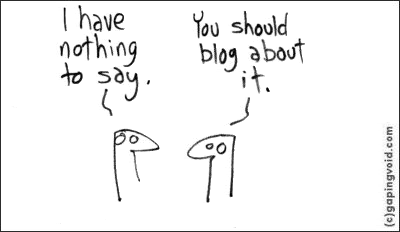
This is how blogging first appeared to many (including me) back in 2001, and many derogatory references in movies and TV series still treat it like that, inserting the punch line “I’ll blog about it” to highlight the ridicule of self centered inanities. This goes along with the MySpace “mirror shot” and instagramming one’s food. It’s all blogging as in documenting (mostly boring) personal lives, but once a person actually experiences something unique, funny or revealing this can go a long way!
2. Blogging as Edge JournalismThere are those like the guy who live-tweeted Osama’s capture, and then there are the professional journalists on the payroll of BBC, CNN and Co. holed up in some dark war torn country, collecting their field notes publicly on their blogs, often anonymously, not to upset their employers. The blog post in these cases is a less polished but also potentially more interesting (because edited) stage of journalistic writing. And it doesn’t always have to be political. There are great investigative bloggers in many fields from education to IT.
3. Blogging as CurationAnother important approach is the process of collecting, categorizing, tagging, reblogging and reposting of interesting content all over the web. Some of the most popular blogs like Neatorama or BoingBoing do exactly that. These blogs are usually rich in images and video and not so rich in words per post, but their content gets shared a lot! More personal or investigative bloggers might look down on this approach for their lack of original content. “They’re just recycling stuff!” they might say, and it’s true, they mostly are, but through this process the endless flow of daily fresh content is sorted and redistributed, so that by following the right blogs one can discover content one would have missed otherwise.
4. Blogging As NewsletterThis form of blogging is often seen when clicking on the “blog” menu button of big corporate websites. Instead of personal diary writing or investigative field notes, these blogs will simply post updates on new products, promotions, etc. in the hope of creating brand awareness and … sales. In other words, it’s all in the name of business, which is not necessarily bad, but this approach is obviously limited and won’t go viral like “funny pictures” and “shocking videos”.
5. Blogging as Content MarketingAnother approach closely linked to the one above is blogging as content-marketing. Well known players in this field are the guys at copyblogger.com, but there are many more. Here, blogging happens in the name of business, too, but instead of just directly talking about new products and promotions (this gets boring very quickly), content marketing blogs will wrap their business intention in entertaining and informative articles, often talking about problems and solutions in the field where the content marketer also offers premium products or services. The writing in these cases is like a free sample showcasing the expertise of the people behind the blog and products or services. The writing is free, can (and should) stand on its own legs, but is also tied in with paid-for products and services.
6. Blogging as a Mixture of All The AbovePersonally, the route that I have taken in my own blogging experiments is a mixture of all the above approaches. I’ve tried to neatly separate the personal stuff from the business stuff from the occasional rant or critique but it always felt artificial. Each and every person contains so many different aspects, and a blog is a great way to reflect this. In other words, When you had an interesting personal experience that is at least tangentially related, blog about it! When you’ve released a new product or service or promotion, tell your readers! When you stumble over dirt in your industry, expose it! Found a great video or image? Reblog it! And all along the way, keep sharing your experience and help people to solve problems you’ve already dealt with, or are in the process of dealing with.
What about you? Do you blog? In which of the above categories (if any) fits your blog? In short: why do you blog?
-
illustration: gapingvoid.com, thumbnail: CC by Mike Licht, NotionsCapital.com

 About the author:
André Klein was born in Germany, has grown up and lived in many different places including Thailand, Sweden and Israel. He has produced two music albums, performed and organized literary readings, curated an experimental television program and is the author of various short stories and non-fiction works.
About the author:
André Klein was born in Germany, has grown up and lived in many different places including Thailand, Sweden and Israel. He has produced two music albums, performed and organized literary readings, curated an experimental television program and is the author of various short stories and non-fiction works.
November 9, 2012
How To Create Ebooks With Open Source Software: #4 The Cover
 Welcome to the fourth part in our short series about creating ebooks with open source tools. (If you missed the last one, click here). Today I’d like to talk a bit about cover design. To many people design is a matter of taste, but it’s much more than that. A well designed book cover communicates authority and emotion, part of the nonverbal factors that help make a sale.
Welcome to the fourth part in our short series about creating ebooks with open source tools. (If you missed the last one, click here). Today I’d like to talk a bit about cover design. To many people design is a matter of taste, but it’s much more than that. A well designed book cover communicates authority and emotion, part of the nonverbal factors that help make a sale.
There is a common belief that you have to be a classically trained artist to create a good cover, but if you simply follow a few rules, everyone can do “professional” cover designs.
Personally, I don’t have any illusions about being specifically innovative when it comes to graphic design, so I rely on a minimalist approach. Put differently, the less there’s happening on the cover, the less can go wrong!
I’ve seen many authors who try to imitate the intricate cover designs of bestseller covers, complete with customized font styling, extensively photoshopped graphics and layers of effects and shading. If independent authors try to compete with these products of experienced designers the result is often a mess. This is why, in most cases, simple is better!
Besides, the book cover in the ebook age has a completely different function than for paperbacks.
Book Cover As IconIt might sound strange but most of the time your readers will not see your book cover anyway. It will certainly not constantly appear while reading on an e-reader or tablet. And if it does it will show up only as a little thumbnail sized image. Also when it comes to listing in stores, in most cases your book cover will take up very little screen real estate, so from the beginning we have to choose an approach that will look good when reduced to a small size.
As a rule of thumb, designing an ebook cover is much closer to creating an icon than to producing a poster. Nobody will see the painfully chosen hue of gold you chose for the ring on the finger of your protagonist, unless the cover shows a close-up of the hand. There’s no need to get lost in too many details. Instead, create a cover that is iconic. Not only will it be easier to design technically, but it will also have great recognition value, even if shown at small sizes.
Simple Tools With Great ResultsThe following approach to cover design can be applied to any software, whether it’s Photoshop or simpler software. Since this tutorial series is based on open source tools, I will take Open Office Draw as an example, just to show how great results can be achieved with a minimum of technical knowledge.
starting with an empty document…
first let’s set up our page by right click > page setup
under background, let’s choose a simple color for now.
under the “page” tab, make sure to set all margins to 0.00 to avoid white spaces
if you get asked this, say Yes
on our new page, click the T icon and draw a text field rectangle…
… and write your title within
…maybe center it…
…change the font-color by clicking on… “Font Color”…
and maybe select white for now.
Since we’re at it, why not add a little shadow effect, as well.
Next up, let’s add an image to make things more interesting.
I chose a simple photo from morguefile.com for this tutorial.
…And here is the same graphic, but I changed the title font to something more respectable. But the letters are a bit glued together…
…so I do right click > Character and set the Spacing to 4.0 and hit OK
Here are the letters with spacing, and also another photo for the center.
Next up I added the author name under the picture in the same font.
To structure the cover a bit more, we are going to add dividing lines now by clicking on the rectangle icon and drawing a narrow rectangle over the ”seams”
right click on the rectangle > Area to control its color…

let’s also set it to White for now, then hit OK.
Now do a right click > copy on the rectangle…
and paste it…
…dragging it over the bottom “seam”.
Once you’re done, simply export the image as JPG (make sure to set it to full quality) or TIFF
here’s another variation of the same design with a different photo
and yet another photo.
Some More ExperimentationsIf you are bored by this three-tiered structure, why not try something else. First, delete everything except for the title and the author name.
Then add a circle by selecting the Ellipse tool, hold the left mouse button and start dragging. Note: to get a perfectly round circle make sure to hold the Shift key on your keyboard while dragging.
Next, right click on the circle and select Area
In the popup, go to Bitmaps and import your own photo
(the program will ask you for a name, this can come in handy if you import lots of graphics, for now the default is okay). Click OK when done.
Voilá! Now we have an image in a circle which has great iconic value! Take a few steps back from the screen (or resize the image) to do the thumbnail-check.
Next, let’s add a border to the image by right clicking and selecting Line
For this example I chose Black and a width of 0.20
I’m not fully convinced, but the idea is not bad… What if…
we substitute the image within the circle and make it a bit smaller and make the border white? That’s better, isn’t it?
(to position the image within the circle use the X and Y offset controls)
Now let’s add another circle on top of our globe (like we did above) and send it backward by right click > arrange
Mmmh, alright…
Now we could add a triangle behind it, maybe in orange to add some contrast?
and maybe change the Area (right click on triangle) and give it a gradient to make it more interesting.
SummaryWhile these examples certainly are no Picassos, I hope that they nevertheless gave you some ideas how to realize quasi-professional covers in very little time and with no previous technical knowledge or expensive software.
As usual, I’m happy to hear your feedback about this tutorial. Did I miss something? Would you like to ask something else? The comment section is all yours!

 About the author:
André Klein was born in Germany, has grown up and lived in many different places including Thailand, Sweden and Israel. He has produced two music albums, performed and organized literary readings, curated an experimental television program and is the author of various short stories and non-fiction works.
About the author:
André Klein was born in Germany, has grown up and lived in many different places including Thailand, Sweden and Israel. He has produced two music albums, performed and organized literary readings, curated an experimental television program and is the author of various short stories and non-fiction works.







